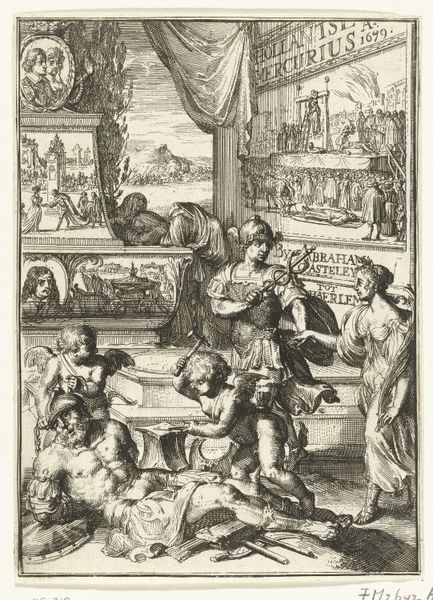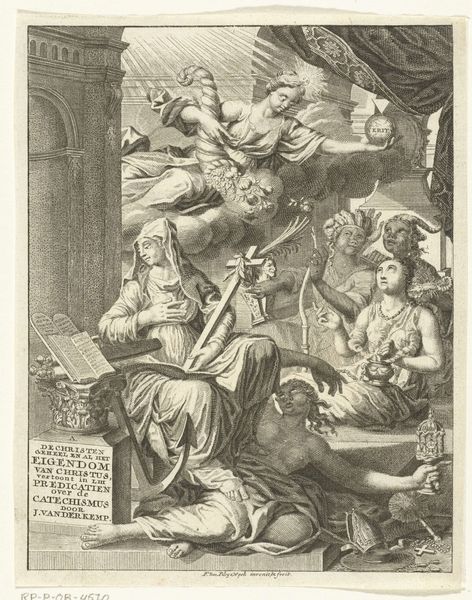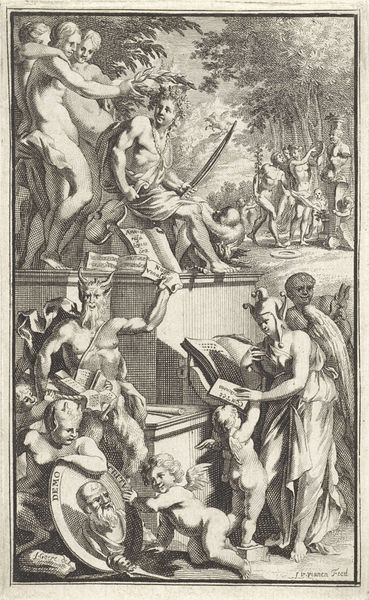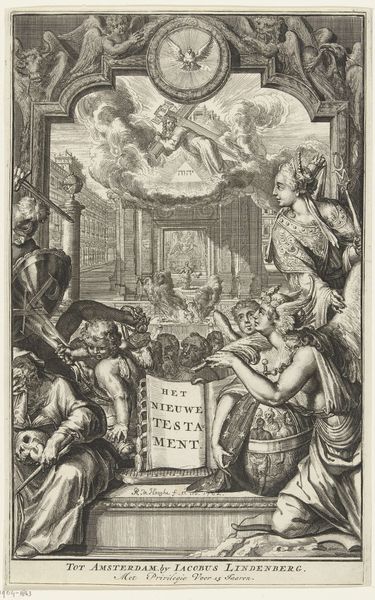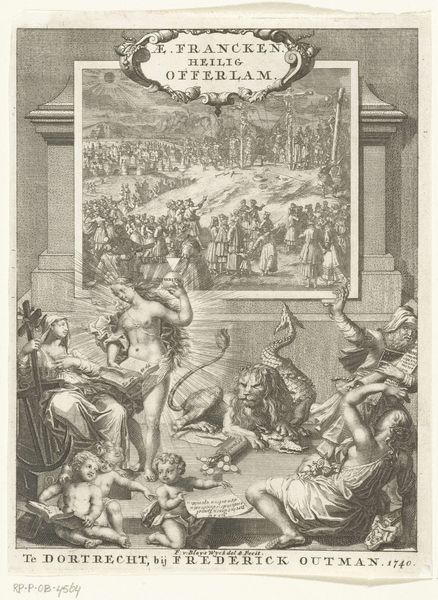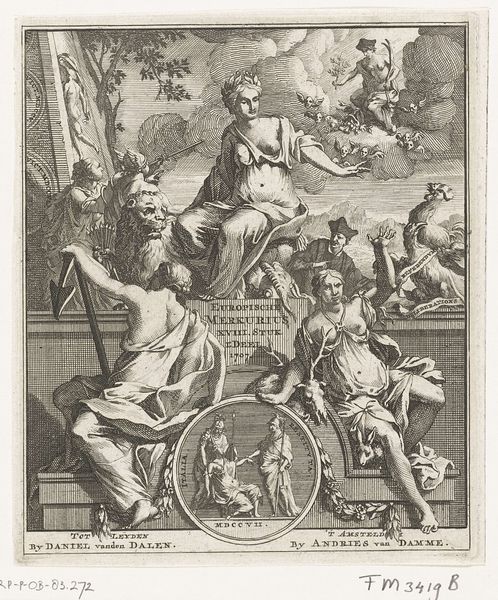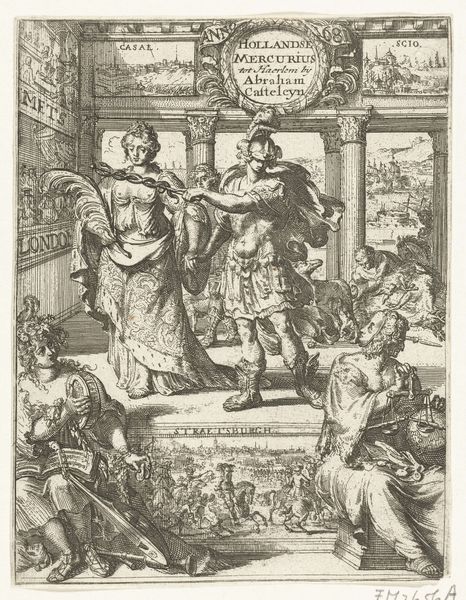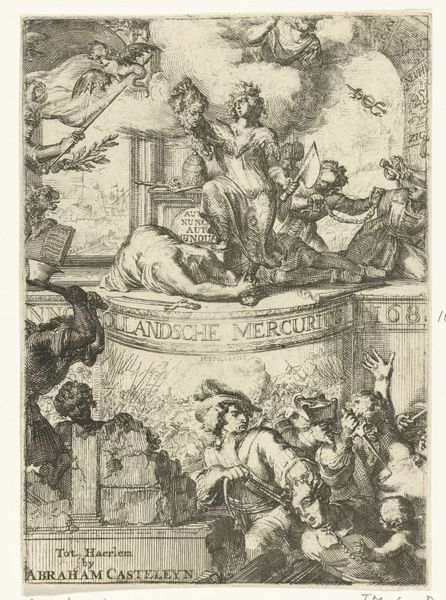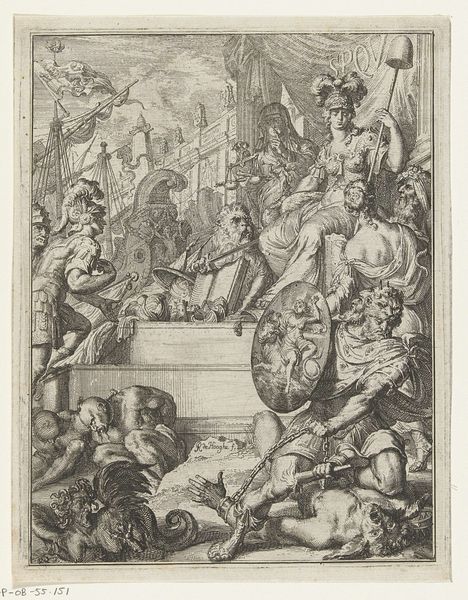
Titelpagina voor: Europische Mercurius, 13de stuk, 1ste deel, 1702 1702
0:00
0:00
pietersluyter
Rijksmuseum
print, engraving
#
allegory
#
baroque
#
dutch-golden-age
# print
#
figuration
#
form
#
line
#
history-painting
#
engraving
Dimensions: height 162 mm, width 133 mm
Copyright: Rijks Museum: Open Domain
This is the title page of the “Europische Mercurius, 13th issue, 1st part”, made in 1702 by Pieter Sluyter. It’s an engraving, meaning the image was incised into a metal plate, inked, and then printed. Engravings like this were crucial for disseminating information, like news and political commentary. The dense allegorical imagery combines classical figures with contemporary symbols of power and commerce. Look closely, and you can see how the sharp, precise lines create texture and depth. This wasn't just a commercial product, but also a cultural artifact, reflecting the engraver's skill and the tastes of the time. The production of prints like these involved a whole network of labor, from the artist who designed the image, to the skilled engraver, the printers, and the booksellers who distributed the final product. By understanding the material processes behind this image, we can appreciate its value as more than just a picture; it’s a window into the world of early modern Europe and the rise of mass media.
Comments
No comments
Be the first to comment and join the conversation on the ultimate creative platform.
